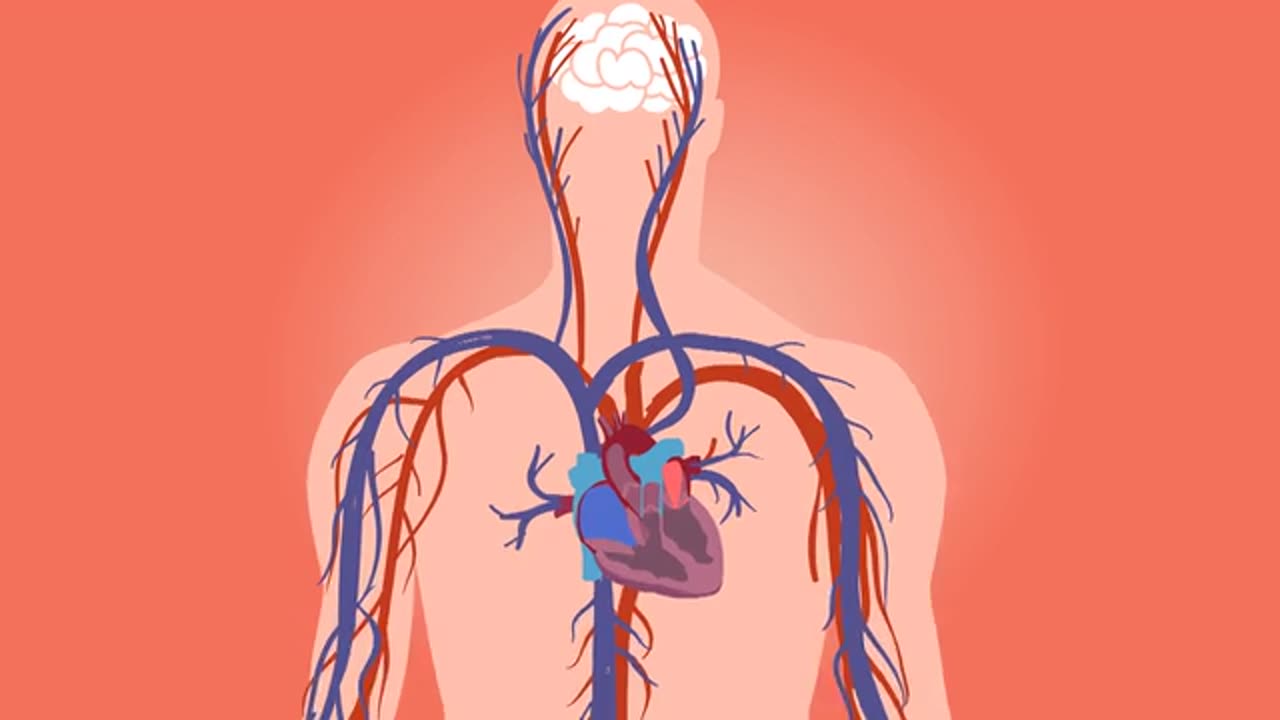Premium Only Content

The heart is a muscular organ in most animals. This organ pumps blood through the blood vessels of the circulatory system.[1] The pumped blood carries oxygen and nutrients to the body, while carrying metabolic waste such as carbon dioxide to the lungs.[2] In humans, the heart is approximately the size of a closed fist and is located between the lungs, in the middle compartment of the chest, called the mediastinum.[3]
In humans, other mammals, and birds, the heart is divided into four chambers: upper left and right atria and lower left and right ventricles.[4][5] Commonly the right atrium and ventricle are referred together as the right heart and their left counterparts as the left heart.[6] Fish, in contrast, have two chambers, an atrium and a ventricle, while most reptiles have three chambers.[5] In a healthy heart blood flows one way through the heart due to heart valves, which prevent backflow.[3] The heart is enclosed in a protective sac, the pericardium, which also contains a small amount of fluid. The wall of the heart is made up of three layers: epicardium, myocardium, and endocardium.[7] In all vertebrates the heart has an asymmetric orientation, almost always on the left side. According to one theory this is caused by a developmental axial twist in the early embryo.[8][9]
-
 DVR
DVR
Bannons War Room
1 month agoWarRoom Live
7.48M1.5K -
 47:02
47:02
BonginoReport
7 hours agoWoman Berated Over MAHA Hat in Gym Incident Speaks Out! (Ep.08) - 03/19/2025
151K151 -
 24:16
24:16
Producer Michael
6 hours ago$7,000,000 EMERALD OVER 200 YEARS OLD!
20.8K4 -
 2:04:04
2:04:04
Melonie Mac
5 hours agoGo Boom Live Ep 41!
39.9K15 -
 57:45
57:45
Mally_Mouse
4 hours agoLet's Hang!! - Just Chillin' & Chattin
37.6K2 -
 1:31:49
1:31:49
Kim Iversen
8 hours agoCIA Fingerprints All Over JFK’s Assassination: Dirty Secrets & Shocking Israeli Connections??
119K161 -
 2:03:50
2:03:50
vivafrei
12 hours agoElon CONFIRMS Biden Played Politics with Astronauts; JFK Files Dud? Trump Attacks Poilievre & MORE!
209K149 -
 44:20
44:20
Candace Show Podcast
7 hours agoRyan Reynolds Wants to COME OUT… Of The Lawsuit | Candace Ep 163
129K101 -
 54:50
54:50
LFA TV
1 day agoEurope: ‘To Avoid War, We Must Get Ready for War’ | TRUMPET DAILY 3.19.25 7PM
34.5K7 -
 1:37:35
1:37:35
2 MIKES LIVE
6 hours ago2 MIKES LIVE #194 News Breakdown Wednesday!
22.9K